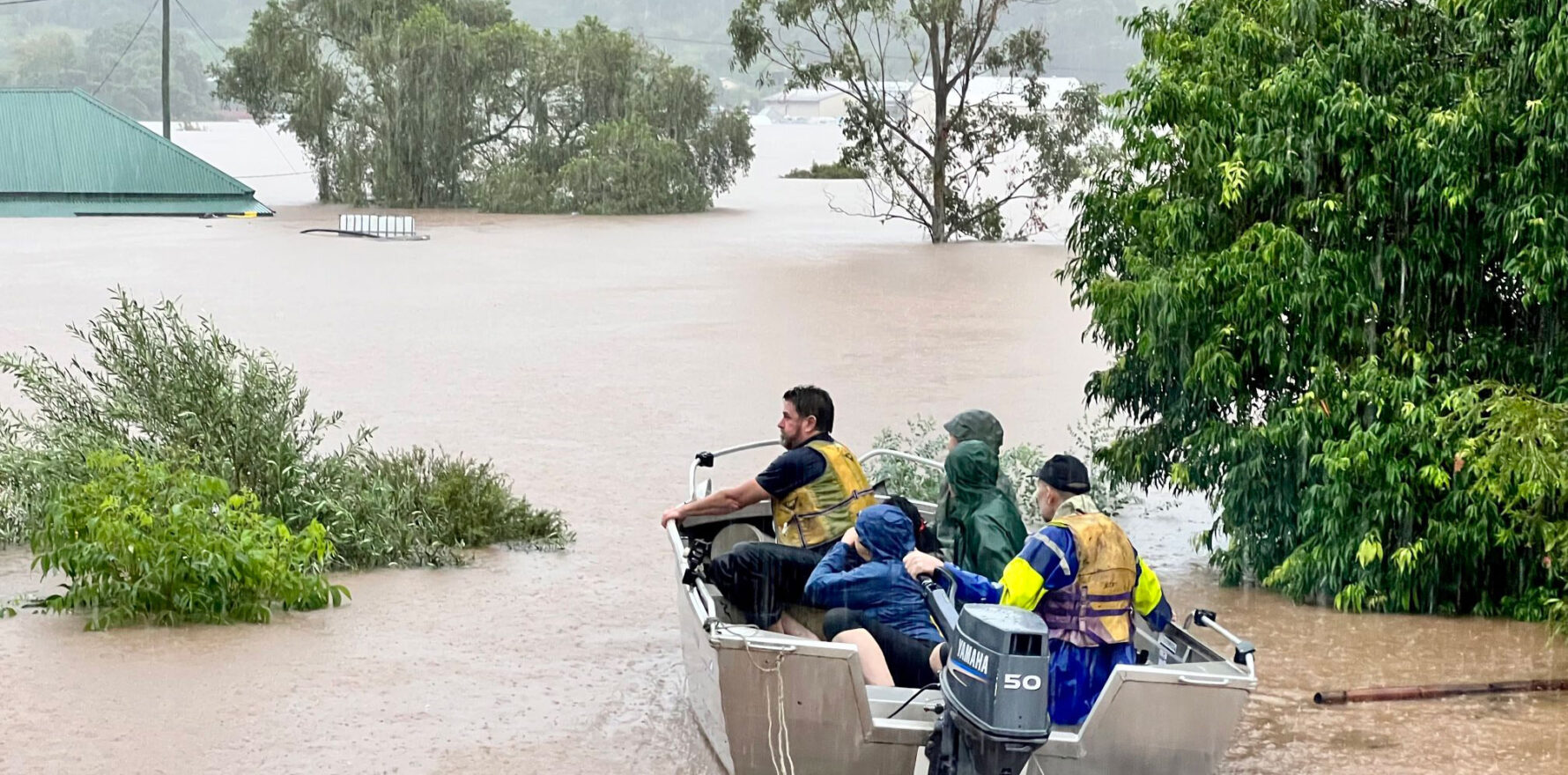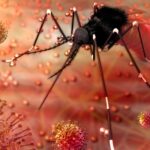Maternal stress is another presentation to look out for as floodwaters in Brisbane and the northern rivers begin to subside.
Cellulitis, leptospirosis and Ross River Virus are just a few of the flood-related conditions patients may present with in the wake of the southeast Queensland-northern NSW floods.
Floodwaters have once again ripped through the region, with the Northern Rivers town of Lismore experiencing its worst flood on record.
Water levels in the Brisbane CBD have peaked lower than in the 2011 floods, but hospitals, pharmacies and GP clinics in the area have been affected.
NewsGP reports that the RACGP is still trying to establish the exact number of general practices that have had to close due to the extreme weather.
Meanwhile, floodwaters came right up to the Butterfield Street/Bowen Bridge Road entrance of the Royal Brisbane and Women’s Hospital.
View from front door of Royal Brisbane and Women’s Hospital last night #qldfloods ? DarrenHansen pic.twitter.com/v6337L8XSE
— Marita Cowie AM (@MaritaCowie) February 28, 2022
It is unclear how long it will take for conditions to return to normal, or what the exact health ramifications will be, but the region’s experience after 2011 floods provides some vital clues.
University of Queensland communicable disease control researcher, Associate Professor Simon Reid, told The Medical Republic that the most common post-flood condition recorded 11 years ago was cellulitis.
“One of my students was the surveillance officer who ran the [post-flood surveillance] program in 2011, and he said cellulitis surprised them by becoming the most dominant condition that they saw,” Professor Reid said.
Moreover, the outbreak of infections in 2011 were relatively antibiotic resistant.
“When bacteria live in environment, they’ve got to defend themselves against other organisms like fungi and other bacteria, so they tend to be pretty good at mounting defences as well as disabling the opposition’s defences,” Professor Reid said.
“As a result, they tend to be quite resistant to antibiotics, so there can be quite a problem in terms of treatment.”
While cellulitis represents an immediate risk, with affected patients likely to present in the days and weeks following flooding, the bacterial disease leptospirosis represents a medium-term risk, according to Professor Reid.
“In Queensland in 2011, there were double the number of leptospirosis cases compared to the long-term average, and most of those cases occurred within three months of the floods,” he said.
While rare, leptospirosis can be deadly – Fiji reported about 500 severe cases and 40 deaths following a cyclone in 2012.
It is caused by spirochaetes from the genus Leptospira, a worm-like bacteria which Professor Reid said can “quite happily” live in moist soil for weeks.
“The first symptom that someone who’s going to get sick will notice is a fever,” he said.
“The fever can then go away, and then the person develops a very severe second phase of the disease.
“The concern [for GPs to look out for] would be people who have a fever and some form of skin wound or exposure to mud.”
Leptospira enters the body through cuts and abrasions, as well as mucous membrane – so while it’s technically possible to contract leptospirosis through a water splash to the face, Professor Reid said it was most likely to enter through a wound.
He also flagged the possibility of a rise in mosquito-borne viruses like Ross River Fever.
“Immediately after a flood, all the mosquitoes are actually washed away, but you’ll then get all this standing water which means that the remnant population then just goes berserk,” Professor Reid said.
If an uptick in Ross River were to happen, it wouldn’t be immediately obvious due to the mosquito breeding cycle.
“There’ll be a delay – so cellulitis should occur within days of exposure, lepto could be a few weeks after and then Ross River is a few weeks to a couple of months [after flooding],” Professor Reid said.
An even longer-term effect to look for, according to UQ public health researcher Dr Katrina Moss, is maternal stress.
Dr Moss followed Brisbane mothers who were pregnant during the 2011 floods and tracked the development of their children after birth to help understand the effect of prenatal disaster-related stress on unborn children.
“When mums were pregnant during the floods, the stress they experienced – things like being evacuated, their house being inundated, losing possessions, worrying about friends and family –can trigger an emotional chain reaction,” she told TMR, which can affect the unborn baby.
“Those feelings of stress are underpinned by stress hormones like adrenaline and cortisol, and when those hormones cross the placental barrier they can change the way the placenta works.
“And they can also disrupt the baby’s developing stress response system, changing the way it responds to stress.”
The flood babies Dr Moss’ team studied were more likely to have poorer cognitive and motor development, difficult temperament and anxiety.
On a more positive note, Dr Moss said these outcomes were not inevitable so long as expectant mothers were regularly screened and treated for signs of distress.
“Right now, it’s pretty reasonable for people to feel upset and distressed and anxious and angry, but in a month if people are still experiencing emotions that are affecting their daily life, that’s a good time for their GP to step in,” she said.
“People aren’t just dealing with the flood, they’re dealing with the flood on top of the pandemic, and that can really tax their coping resources.”
Dr Moss said her 2011 study found better outcomes for women who had ongoing continuity of care with a GP.
The Queensland/NSW floods are just the kind of natural disaster that is predicted to proliferate as climate change accelerates.
A report from the Intergovernmental Panel on Climate Change released just yesterday flagged that “once-in-a-century” floods could eventually start occurring several times per year and heat-related deaths could quadruple.
The Royal Australian College of Physicians called for a “strong and coordinated approach” from the government.
“The IPCC report identifies catastrophic impacts of climate change to Australia, including an increase in deaths – making it clear that this is a health emergency,” RACP President Professor John Wilson said.
Climate change, he said, represented the biggest threat to the Australian healthcare system and needed immediate action.
Photo credit: Eddie Lloyd (@Worldzonfire) on Twitter





